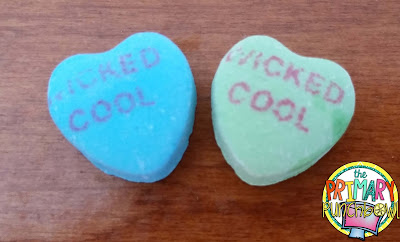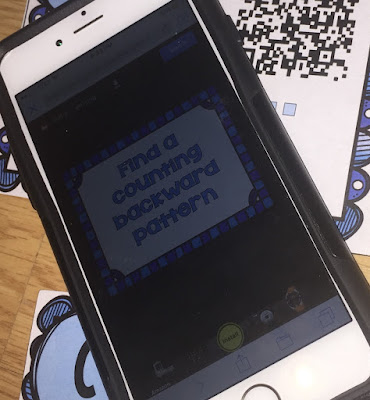Welcome to the Primary Punchbowl!! I'm Megan, from Mrs. Baker's Dozen. I don't know about y'all, but Spring Break couldn't come quicker! My kiddos are in crazy mode and all of those full moons last week did not help things a bit.
But before we can enjoy a week of relaxation, we have our Parent Teacher Conferences. My to-do list is super long, y'all! Cleaning, organizing, REPORT CARDS....whew. And to put the icing on the cake, we put together an awesome display outside the classroom.
Last semester, I interviewed the kiddos about their favorite things in school, created a QR code, and had students show their parents how to scan it using our classroom iPads. This semester, we are solving the MYSTERIES of FIRST GRADE!
My interviews will consist of these questions: 1. What was the hardest mystery you've solved in first grade? 2. What do you want to learn in second grade?
I did this interview with my daughter and created a QR code. It turned out great!
Here's my steps to creating a QR code using Google Drive:
1. Video the interview.
2. Upload and email it yourself.
3. Upload it to Google Drive.
4. Click Shareable Link and mark the bubble that says anyone with this link can view.
5. Click done. Copy the link.
6. Go to a QR code generator website. I used QR Code Generator. I signed up for free.
7. Paste the link in the box and click Create QR Code. Make sure it's on Static.
8. Download the image and print!! It's a good idea to scan it before you print, just in case it doesn't work correctly.
You can use these steps to create ANY kind of interview! Students could interview each other or even another teacher. You could video them giving their parents or grandparents a special message, the possibilities are endless!
My newest product, Mystery Solvers: A QR Code Craftivity for Parent Teacher Conferences, includes a cute creativity, graphic organizers, and printables to extend this lesson of reviewing what we've learned in school so far. Grab this FREEBIE to get you started!!
Thanks for stopping by!
-Meg
0
But before we can enjoy a week of relaxation, we have our Parent Teacher Conferences. My to-do list is super long, y'all! Cleaning, organizing, REPORT CARDS....whew. And to put the icing on the cake, we put together an awesome display outside the classroom.
Last semester, I interviewed the kiddos about their favorite things in school, created a QR code, and had students show their parents how to scan it using our classroom iPads. This semester, we are solving the MYSTERIES of FIRST GRADE!
My interviews will consist of these questions: 1. What was the hardest mystery you've solved in first grade? 2. What do you want to learn in second grade?
I did this interview with my daughter and created a QR code. It turned out great!
Here's my steps to creating a QR code using Google Drive:
1. Video the interview.
2. Upload and email it yourself.
3. Upload it to Google Drive.
4. Click Shareable Link and mark the bubble that says anyone with this link can view.
5. Click done. Copy the link.
6. Go to a QR code generator website. I used QR Code Generator. I signed up for free.
7. Paste the link in the box and click Create QR Code. Make sure it's on Static.
8. Download the image and print!! It's a good idea to scan it before you print, just in case it doesn't work correctly.
You can use these steps to create ANY kind of interview! Students could interview each other or even another teacher. You could video them giving their parents or grandparents a special message, the possibilities are endless!
My newest product, Mystery Solvers: A QR Code Craftivity for Parent Teacher Conferences, includes a cute creativity, graphic organizers, and printables to extend this lesson of reviewing what we've learned in school so far. Grab this FREEBIE to get you started!!
Thanks for stopping by!
-Meg

































































